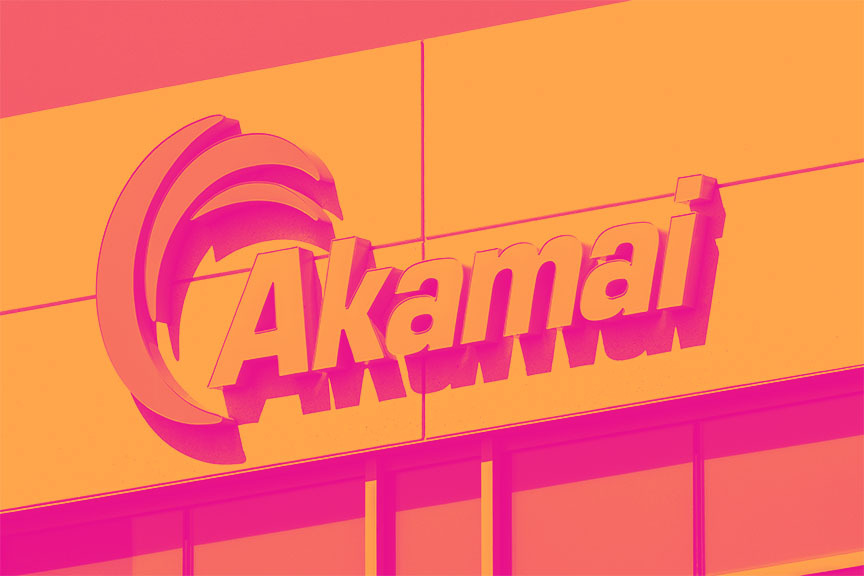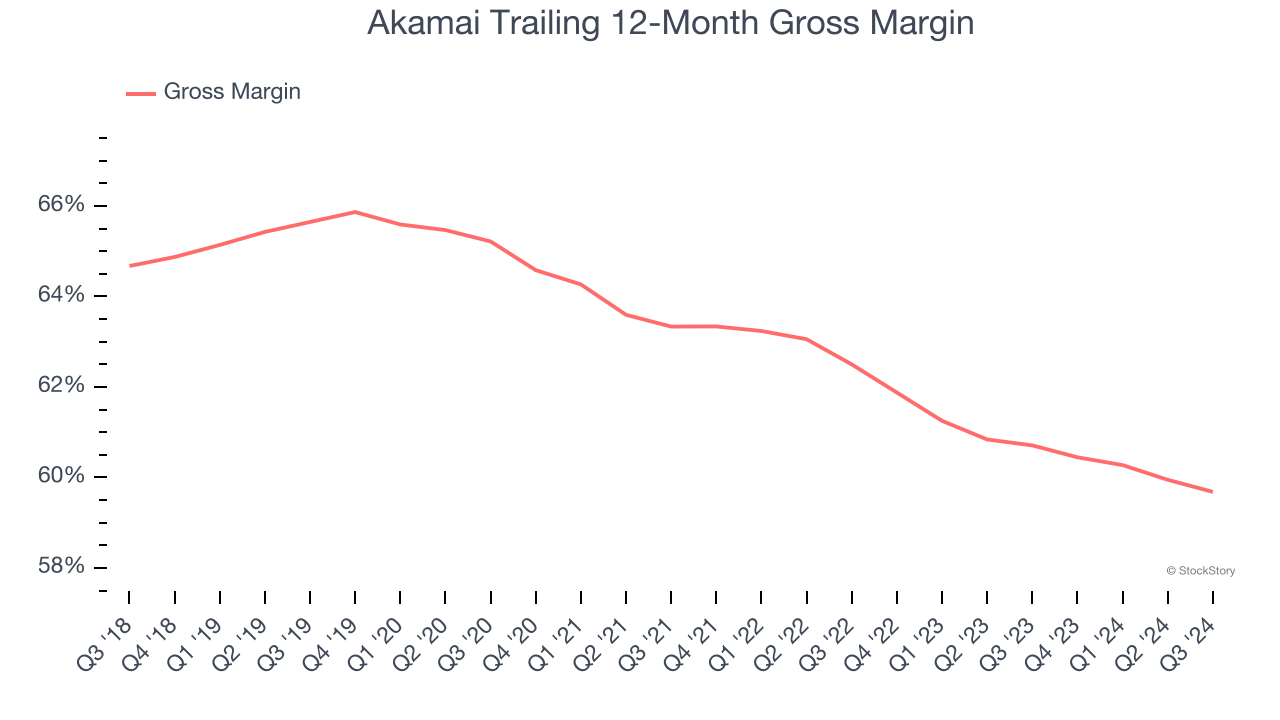
Since July 2024, Akamai has been in a holding pattern, floating around $92.99. The stock also fell short of the S&P 500’s 7.3% gain during that period.
Is there a buying opportunity in Akamai, or does it present a risk to your portfolio? Get the full breakdown from our expert analysts, it’s free.We don't have much confidence in Akamai. Here are three reasons why there are better opportunities than AKAM and a stock we'd rather own.
Why Do We Think Akamai Will Underperform?
Founded in 1999 by two engineers from MIT, Akamai (NASDAQ: AKAM) provides software for organizations to efficiently deliver web content to their customers.
1. Long-Term Revenue Growth Disappoints
A company’s long-term performance is an indicator of its overall quality. While any business can experience short-term success, top-performing ones enjoy sustained growth for years. Over the last three years, Akamai grew its sales at a weak 5.2% compounded annual growth rate. This was below our standard for the software sector. 
2. Low Gross Margin Reveals Weak Structural Profitability
For software companies like Akamai, gross profit tells us how much money remains after paying for the base cost of products and services (typically servers, licenses, and certain personnel). These costs are usually low as a percentage of revenue, explaining why software is more lucrative than other sectors.
Akamai’s gross margin is substantially worse than most software businesses, signaling it has relatively high infrastructure costs compared to asset-lite businesses like ServiceNow. As you can see below, it averaged a 59.7% gross margin over the last year. That means Akamai paid its providers a lot of money ($40.32 for every $100 in revenue) to run its business. 
3. Long Payback Periods Delay Returns
The customer acquisition cost (CAC) payback period represents the months required to recover the cost of acquiring a new customer. Essentially, it’s the break-even point for sales and marketing investments. A shorter CAC payback period is ideal, as it implies better returns on investment and business scalability.
Akamai’s recent customer acquisition efforts haven’t yielded returns as its CAC payback period was negative this quarter, meaning its sales and marketing investments outpaced its revenue. The company’s inefficiency indicates it operates in a highly competitive environment where there is little differentiation between Akamai’s products and its peers.
Final Judgment
Akamai falls short of our quality standards. With its shares trailing the market in recent months, the stock trades at 3.4× forward price-to-sales (or $92.99 per share). While this valuation is reasonable, we don’t see a big opportunity at the moment. There are better investments elsewhere. Let us point you toward ServiceNow, one of our all-time favorite software stocks with a durable competitive moat.
Stocks We Like More Than Akamai
With rates dropping, inflation stabilizing, and the elections in the rearview mirror, all signs point to the start of a new bull run - and we’re laser-focused on finding the best stocks for this upcoming cycle.
Put yourself in the driver’s seat by checking out our Top 6 Stocks for this week. This is a curated list of our High Quality stocks that have generated a market-beating return of 175% over the last five years.
Stocks that made our list in 2019 include now familiar names such as Nvidia (+2,691% between September 2019 and September 2024) as well as under-the-radar businesses like Comfort Systems (+783% five-year return). Find your next big winner with StockStory today for free.

